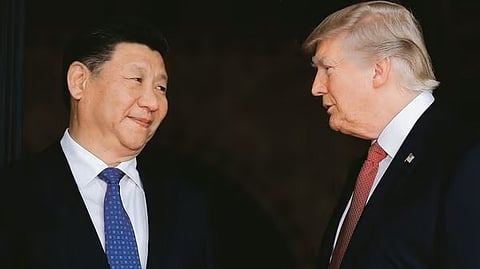

In a bold move to reshape regional alliances and offset rising US protectionism, China is spearheading efforts to build a powerful new economic bloc with Southeast Asian and Gulf countries—an initiative some analysts describe as the early contours of an “Asian Union”.
On Tuesday, Chinese Premier Li Qiang opened the inaugural Asean-China-GCC Economic Forum in Kuala Lumpur, marking a significant push for multilateral cooperation with the Association of Southeast Asian Nations (Asean) and the Gulf Cooperation Council (GCC). Against a backdrop of escalating geopolitical friction, Li positioned the forum as a strategic response to global instability.
“Facing escalating geopolitical conflicts and confrontations, we can create long-term strategic opportunities by deepening mutual trust and strengthening solidarity,” Li said in his keynote address.
The forum was accompanied by a trilateral summit where China, Asean and the GCC signed a joint statement pledging closer collaboration on trade, supply chains, infrastructure and financial connectivity. The GCC includes six oil-rich Gulf states—Bahrain, Kuwait, Oman, Qatar, Saudi Arabia and the UAE—while Asean comprises 10 Southeast Asian nations.
“These three parties make up a quarter of the world’s people and economy but only 5 percent of global trade—showing huge potential for expansion,” Li said, hinting at the under-exploited economic synergies.
Analysts see the move as an effort to forge a new model of multilateralism in Asia, positioning China at the centre of a vast economic sphere. Wang Huiyao, president of the Beijing-based Center for China and Globalization, described the emerging bloc as a “mini Asian alliance” that enhances China’s leverage amid trade tensions with the United States.
“Asean and China have now become a new and mutually reinforcing economic powerhouse,” Wang said. “The inclusion of the Gulf states further strengthens this alliance. Amid global uncertainties and the ongoing trade war, this provides China with a powerful new strategic lever.”
Economic incentives underpin the cooperation. Su Yue, principal economist for China at The Economist Intelligence Unit, noted that China is likely to ramp up infrastructure investment to improve connectivity between the three regions. She said Asean and the Gulf countries are increasingly viewed as “strategic connectors” between China and the US.
“China’s investment in these regions is expected to grow,” Su said. “However, the Asean and GCC members may also be cautious, as they must balance relations with the US, especially given their growing trade surpluses with Washington.”
A notable development in the joint statement was a commitment to expand the use of local currencies in trade and cross-border payments. The move aligns with China’s broader ambition to internationalise the yuan and reduce reliance on the US dollar in global trade—although analysts acknowledge that structural hurdles remain.
“While China may aim to increase yuan usage in trade, the US dollar’s dominance will not be easily displaced,” Su added.
The forum comes at a time of mounting geopolitical competition, with global leaders increasingly wary of the risks. In a speech delivered in Vietnam on the same day, French President Emmanuel Macron warned that superpower rivalry between Beijing and Washington casts “a shadow of a risk of a much larger conflict in this important region”.
As China deepens ties with the Global South and seeks to rewrite the rules of engagement in the post-American global order, the Asean-China-GCC axis may become a pivotal node in a rapidly shifting world economy. Whether this effort matures into a full-fledged “Asian Union” remains uncertain, but the strategic intent is increasingly clear.